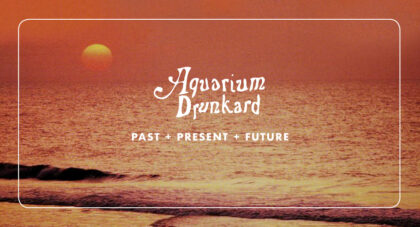(Welcome to Videodrome. A monthly column plumbing the depths of vintage underground cinema – from cult, exploitation, trash and grindhouse to sci-fi, horror, noir and beyond.)
It’s safe to say that when Sweet Sweetback’s Baadasssss Song was released in 1971, a lot of viewers were offended, a great many were thrilled and another healthy portion asked themselves “what the fuck just happened?”
Indeed, from the opening credits sequence, with its controversial “Starring: The Black Community,” you know you’re witnessing a special piece of anti-establishment American cinema. With Sweet Sweetback, Melvin Van Peebles--who wrote, produced, edited, directed and starred in the film--achieved a remarkable piece audiovisual art, and in the process drafted a roadmap to success for a generation of young black filmmakers.
While impossible to overlook how dated the movie feels in 2014–face it, a $150,000 1970 budget doesn’t hold up well in the digital age–the liberal use of jump cuts, montages, freeze frames and other creative shooting techniques were unconventional at the time, and positively unheard of coming from a black director.
However, the provocative social commentary is what sets the movie apart from anything that came before.
The opening two minutes of the film portray (spoiler alert!) a sex scene between a prostitute and a 13-year-old boy named Sweetback (played by Peebles’ son Mario). With that our hero comes of age, raised in a whorehouse and forging his life skills–while plying his considerable physical endowment–in the sex trade. Things really get moving when the grown up Sweetback (played by grown up Peebles), attacks two white cops and thwarts the savage beating of a young black suspect. He must then go on the lamb in an urban Los Angeles that could have been lifted from an Iceberg Slim hallucination.
During the ensuing manhunt, we are introduced to a slew of disenfranchised city creatures, who collectively give voice to the speckled underbelly of American society. Though their stories are lightly explored here, we meet Black Panthers, Afro-American preachers, Hells Angels, Puerto Rican nationalists, Mexican illegals along with the requisite list of pimps, gamblers, bums, hustlers, drug dealers, hippies and gays without whom an early 70s streetscape wouldn’t look right.
Layer in musical orchestrations by Earth, Wind and Fire and you have a funkalicious black soul safari that sets the bar high for other films of its ilk.
In fact, what’s so unique about Sweet Sweetback’s cartoonish black aesthetic is that it was arguably the first of its kind; the one from which all “blaxploitation” films derived and must ultimately be compared. And while it’s fair to claim that Sweet Sweetback had a strong influence on blaxploitation, how it deals with the actual theme of exploitation is sometimes mischaracterized.
Mainstream blaxploitation in the 1970s was the product of big Hollywood studios using sensational black cultural themes to gain popular appeal and therefore turn a profit. Examples include studio productions like Shaft and Foxy Brown, which place strong black characters as action heroes battling campy villains in urban ghettos, while managing to avoid discussing race in any meaningful way. Conversely, Sweet Sweetback’s Baadasssss Song offers a more deliberate, albeit cynical, meditation on society’s racial double standards. The principal theme is how “the man” takes advantage of black people, best demonstrated by Sweetback’s status as the victim of police prejudice and his use of sexual favors for salvation.
Only the good shit. Aquarium Drunkard is powered by its patrons. Keep the servers humming and help us continue doing it by pledging your support.
To continue reading, become a member or log in.


